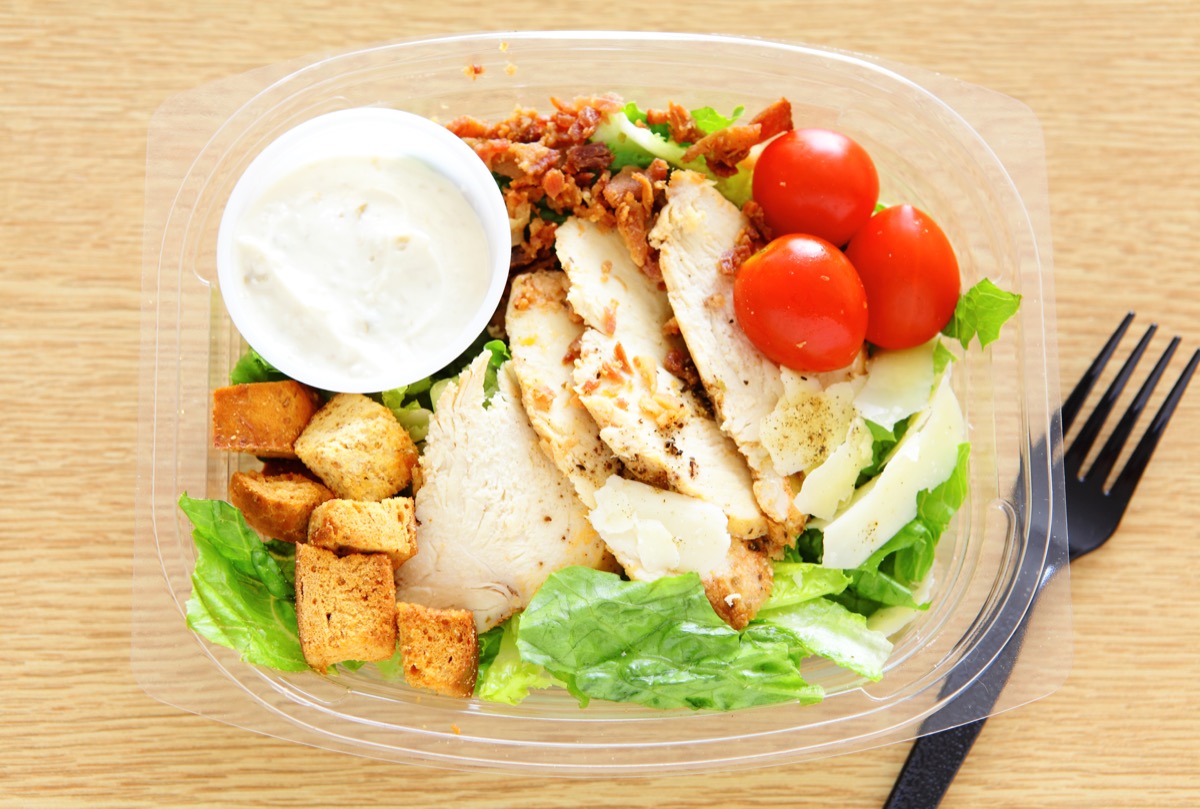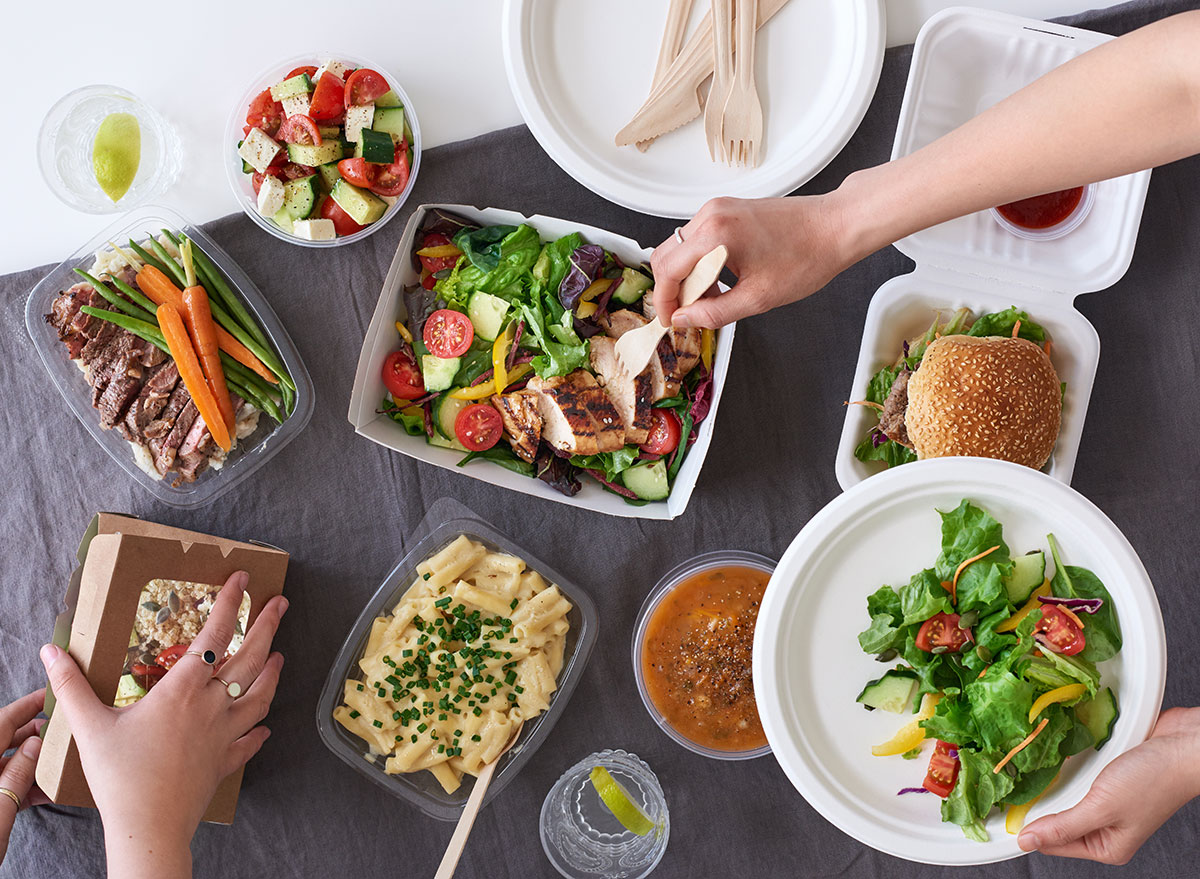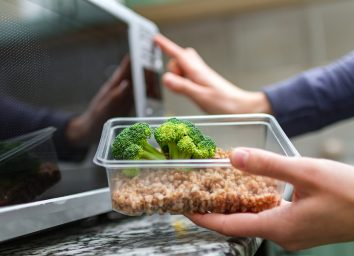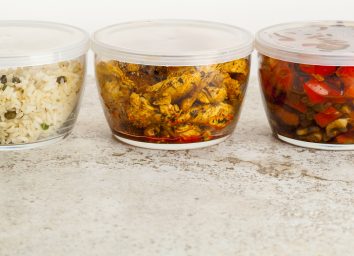One Major Side Effect of Eating From a Plastic Container, Says Science

Ordering takeout is something that many look forward to during the weekend or even on a busy weeknight. And sometimes, you order enough to have plenty of leftovers. A true gift of the takeout experience. The question is, should you switch the container your takeout came in into a different one if you plan on eating it the next day?
That step may not be necessary—unless you plan on reheating the food in the same plastic container.

The low down on BPA
Plastic containers contain BPA, bisphenol A (BPA), an industrial chemical that’s been used to make certain plastics and resins since the 1950s. The chemical, along with a class of chemicals called phthalates, has been shown to disrupt hormones. Research indicates ingesting these chemicals may even be linked to obesity, diabetes, and reproductive harm.
BPA is found in polycarbonate plastics—and these are often the plastics that are used in the packaging for foods and beverages. It can also be found in epoxy resins, which are used to coat the inside of metal products such as food cans, bottle tops, and water supply lines. BPA from plastics can seep into foods and beverages over time, specifically when the container is exposed to heat. This is especially true when the container is microwaved.
The chemical may pose an even greater threat to younger children and infants, with research showing it may have a negative effect on children’s behavior. One 2016 review found that exposure to BPA in childhood was associated with higher levels of anxiety, depression, hyperactivity, and inattention. Formerly found in baby bottles, the U.S. Food and Drug Administration (FDA) now prohibits the use of materials with the chemical in infant formula packaging, sippy cups, and baby bottles.
Bottom line
If you’re worried about BPA exposure, consider buying containers that are BPA-free. However, just know that alternatives to BPA may still release other kinds of chemicals that could mess with your hormones when put into the microwave.
Your safest bet? Don’t microwave any plastic containers.
Instead, always transfer your food onto a microwave-safe plate so you can limit your exposure to harmful chemicals as much as possible.
For more, check out One Major Side Effect of Drinking From a Plastic Bottle, Says Science.








